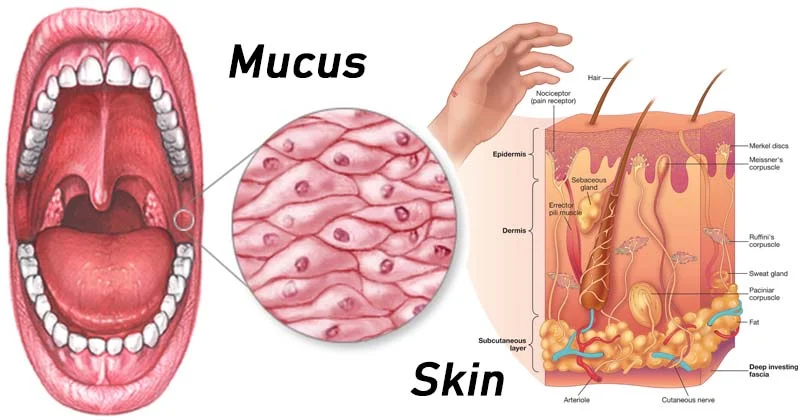The immune system’s anatomical barriers serve as the initial line of protection against infections. These chemical and physical barriers stop dangerous bacteria from entering the body. The skin and mucous membranes are two of these barriers that are most important. Being the biggest organ in the body, the skin acts as a strong defense against infections. The mucus membranes that line the gastrointestinal, urogenital, and respiratory tracts, among other bodily cavities and tubes, secrete a slick substance known as mucus.
Table of Contents
Anatomical Barriers of Immune System
The human body’s immune system relies on a network of defenses, including the skin and mucous membranes, to ward off invading pathogens. These anatomical barriers serve as the body’s first line of defense, utilizing physical and chemical mechanisms to protect against infections. Their combined efforts play a vital role in supporting the immune system’s ability to keep harmful microorganisms at bay.
Skin
The skin is the largest organ of the body and serves as a critical barrier against infection.
Physical Barrier
The outermost layer of the skin called the epidermis, is a complex structure made up of densely packed epithelial cells and keratin, a resilient and protective protein. This intricate composition forms a robust barrier, making it highly challenging for pathogens to infiltrate the body.
Chemical Barrier
The skin produces an oily substance called sebum, which is generated by sebaceous glands. Sebum has antimicrobial properties that are effective in combating and preventing the growth of bacteria and fungi. Additionally, sweat, produced by sweat glands, contains lysozyme, an enzyme that aids in breaking down bacterial cell walls.
Microbiota
The skin is colonized by a diverse community of beneficial microorganisms. These normal flora compete with pathogenic microbes for resources and space, reducing the likelihood of infections.

Mucous
The respiratory, gastrointestinal, and urogenital tracts are among the body’s interior sections that are exposed to the outside world and are lined by mucous membranes.
Physical Barrier
Dust, bacteria, and other particles are kept from penetrating the mucous membranes’ epithelial cells by mucus. Mucus and trapped particles in the respiratory tract are moved by cilia, which are microscopic hair-like structures, down the throat where they can be ingested or ejected.
Chemical Barrier
Mucus contains various antimicrobial substances, including:
- Lysozyme: An enzyme that breaks down the cell walls of bacteria.
- Defensins: Antimicrobial peptides that disrupt the integrity of bacterial and viral membranes.
- IgA Antibodies: Immunoglobulin A (IgA) binds to pathogens, neutralizing them and preventing their adherence to mucosal surfaces.
Microbiota
Much like the skin, mucous membranes support a diverse range of commensal bacteria that prevent pathogenic germs from colonizing by outcompeting them for resources and available space.
Other Anatomical Barriers
Saliva and Tears
Lysozyme and other antimicrobial compounds found in tears aid in eliminating and neutralizing germs.
Stomach Acid
Most ingested infections are destroyed by the stomach’s very acidic environment, which has a pH of around 2.
Urine Flow
The regular flow of urine helps to flush out microorganisms from the urinary tract.
Frequently Asked Questions
How do beneficial microorganisms on the skin and mucous membranes help prevent infections?
Beneficial microorganisms, or microbiota, compete with pathogenic microbes for nutrients and space, thereby inhibiting the growth and colonization of harmful pathogens.
Can anatomical barriers alone protect against all infections?
While anatomical barriers are a crucial first line of defense, they are not foolproof. Some pathogens can bypass these barriers. When this happens, the body relies on other components of the immune system, such as the innate and adaptive immune responses, to combat infections.
How does urine flow help prevent infections?
Regular urine flow helps flush out microorganisms from the urinary tract, reducing the risk of infections by physically removing potential pathogens.
Related Articles

